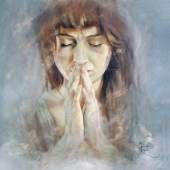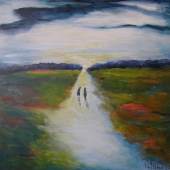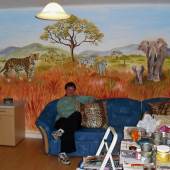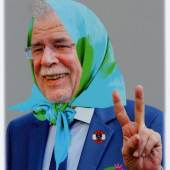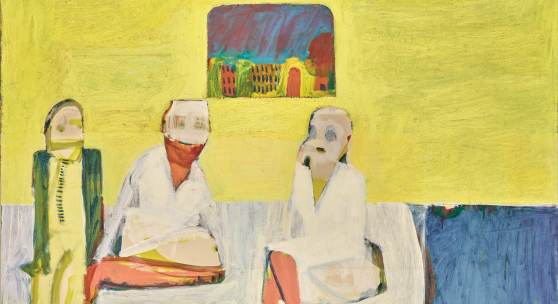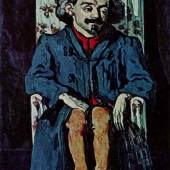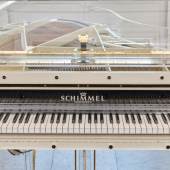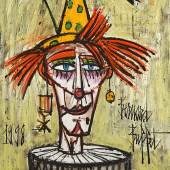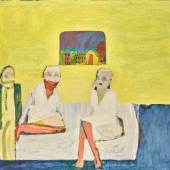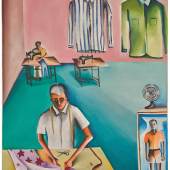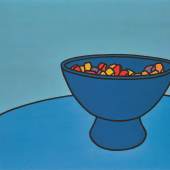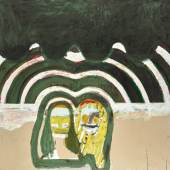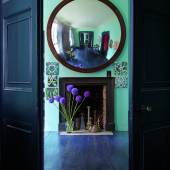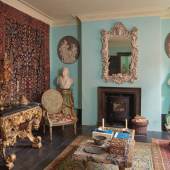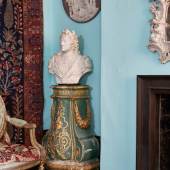Auction
The Personal Collection of Howard Hodgkin & 1,000 Years of Middle Eastern Art
-
Auktion24.10.2017
Hodgkin remarked that he found painting solitary but that collecting bought him into contact with like-minded people. Furthermore, the discriminating eye that he developed was nurtured by close friendships with experts in the field. It was Hodgkin’s art master at Eton, Wilfrid Blunt, who first introduced him to non- Western art and who inspired him to collect his first examples of Indian painting. Later, Hodgkin became friends with the collector Robert Erskine and through him the network of various Parisian dealers, including Charles ‘Uncle Charlie’ Ratton. Robert Skelton, then assistant Keeper at the V&A, became a lifelong friend with whom the artist first visited India in 1964. It was with Skelton that Hodgkin was able to meet other connoisseurs and collectors, including Jagdish Mittal, Kumar Sangram Singh, Milo C. Beach and Stuart Cary Welch, whose own celebrated collection of arts of the Islamic and Indian world was sold at Sotheby’s in 2011.
THE MAKINGS OF A COLLECTOR
Hodgkin first encountered the word antique in a comic, at the age of seven, when he had been evacuated to America during World War II - Minnie Mouse was on the phone talking about the footstool she had just bought and he assumed the word was pronounced Anti-queue. By the time he had his first retrospective, at the Museum of Modern Art in Oxford in 1976, he was better known in the art world as a collector than as a painter. In the 1970s trading in antiques supplemented his income as an artist and art teacher, and he specialised in frames - hitchhiking from Bath to London in his pursuit as he never learned to drive. His quest for particular frames continued throughout his life and they came to play a significant role in his paintings. When he travelled he often sought out frames to take home with him, incorporating them in his paintings of the place or trip from which they originated.
So honed was his eye that he particularly delighted in finding overlooked treasures. “There was delight in the orphan: finding some misrecognized piece, restoring it to its rightful primary place,” his partner comments. “He once bought an early 19th century mahogany teapot, which stood on four tiny lion’s paw feet. Holes had been drilled through the faces above them. Nobody knew what they were. Howard had them photographed and the images enlarged. They are now identified as late Roman ivory casket fittings. He gave them to the British Museum, in memory of his father, Eliot Hodgkin.”
Howard came from a long line of collectors and grew up surrounded by the eclectic acquisitions and assemblages of his great-grandparents, John Eliot Hodgkin, and his wife Edith, whose inventory of art was published in 1900 in three volumes as Rariora, listing ‘things wondrous rare and strange’. He evidently shared their passion for tiles – they collected English tiles, whereas Howard was drawn to tiles from Persia, India, Turkey and Damascus from the 12th century onwards.
THE ARTIST’S JOURNEY
It was partly with the help of his cousin, Margery Fry, that when Hodgkin left school in 1949 he won a place at Camberwell Art School, and then moved on to the Bath Academy of Art, Corsham. At Camberwell, he was taught by leading Euston Road School painters Victor Pasmore and William Coldstream, and remembers considerable peer pressure to conform to a house style. “I was already an outsider even then,” he recalls, and by the time he went to Corsham, he already had his own artistic language. He studied at the Camberwell School of Art in London and the Bath Academy of Art in Corsham from 1949–1954. Critical recognition for his work grew steadily through the 1960s and 1970s, and by 1984 he was asked to represent Britain at the Venice Biennale, swiftly followed by being awarded the Turner Prize in 1984. Since then Hodgkin has been the subject of numerous major international exhibitions, including the Hayward Gallery, London (1996), ‘Howard Hodgkin: Time and Place 2001–2010’, Oxford, Tilburg, California, (2010–11), ‘Howard Hodgkin: Absent Friends’, The National Portrait Gallery, London (2017), ‘Howard Hodgkin: In The Pink’ at Gagosian, Hong Kong (2017), and the current show ‘Howard Hodgkin: Painting India’ at the Hepworth Wakefield in Yorkshire, England, which closes on 8 October 2017. ‘Howard Hodgkin: India on Paper’ will open at the Victoria Art Gallery, Bath, on 14 October 2017 and will run until 7 January 2018.
-
Wo Sie die Werke Cézannes besichtigen können: National Gallery, London „Alte...
-
23.01.2025 - 30.01.2025Vom 23. bis 30. Januar 2025 präsentiert Sotheby’s eine außergewöhnliche Online-...
-
06.03.2025Sotheby’s, eines der weltweit führenden Auktionshäuser, beginnt das Jahr 2025 mit einer...
-
24.10.2017Auktion »
Auction in London on 24th October 2017.
